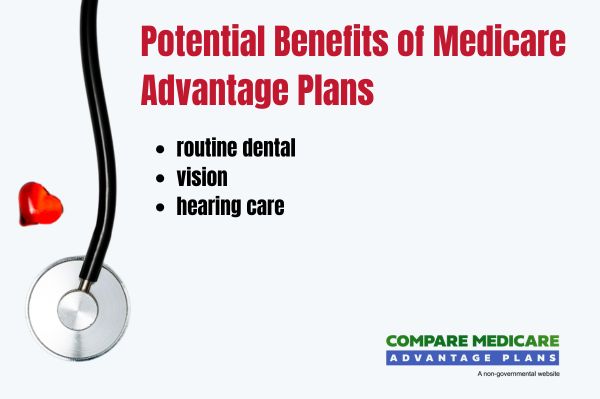Top Medicare Advantage Companies for 2026

Navigating the sea of Medicare Advantage plans can be overwhelming, but knowing the top-performing companies can simplify your decision. In 2026, the UnitedHealthcare insurance company remains one of the most chosen brands in America, often celebrated for its comprehensive coverage and customer satisfaction. As the largest provider, UnitedHealthcare serves millions, offering a range of plans that cater to diverse needs.
Kaiser Permanente, another titan in the industry, consistently ranks high in performance studies such as those by J.D. Power. Their integrated care model ensures seamless coordination between healthcare providers, enhancing patient outcomes. Anthem also stands out, known for its robust network and innovative health programs.
Aetna, with an average star rating of 4.29 out of 5, surpasses the industry average, offering plans with no monthly premium for about 83% of eligible beneficiaries. Despite some setbacks in specific markets and the discontinuation of certain benefits, Aetna remains a strong contender.
Humana, on the other hand, focuses on preventive care, health care programs, and chronic condition support, making it a favorite among those seeking affordable and comprehensive medical care.
These companies lead the pack due to their extensive networks, customer satisfaction, and variety of plans. As you compare Medicare Advantage plans from many insurance companies, consider these top providers to ensure you choose a reliable option that meets your healthcare needs.
How to Compare Medicare Advantage Plans
Comparing Medicare Advantage plans is not just a task but a crucial step in securing the right healthcare coverage. With many Medicare Advantage plans available, it’s essential to assess each option thoroughly to ensure it aligns with your healthcare needs. Begin by checking the star ratings, which offer a snapshot of plan quality. Next, delve into the costs associated with each plan, including premiums, deductibles, and out-of-pocket expenses.
Furthermore, reviewing the prescription drug coverage is vital, especially if you have ongoing medication needs. During the Medicare open enrollment period from October 15 to December 7, take the time to compare your options meticulously for a medicare supplement.
Remember, not all plans available can vary based on your ZIP code and county, so local availability and the plan’s service area plans should also be considered.
Check Star Ratings

The CMS star ratings are an invaluable tool for evaluating the quality of Medicare Advantage plans in your area. These ratings:
- Range from 1 star (poor) to 5 stars (excellent)
- They are based on various quality and performance metrics defined by CMS
- Indicate plan performance in aspects like customer service, health outcomes, and member satisfaction, with higher star ratings generally reflecting better performance.
When comparing plans, look for those with higher star ratings, as they typically offer better overall value and service. Focusing on these ratings narrows down your choices to the most reliable and high-quality options available in your ZIP code.
Compare Costs
Cost is a significant factor when choosing a Medicare Advantage plan. Many plans offer $0 monthly premium options, but it’s crucial to consider all associated costs, including monthly premiums:
- Premiums
- Deductibles
- Copayments
- Out-of-pocket maximums
The annual deductible is the amount you pay out of pocket for healthcare before your higher deductible plan starts to pay.
Copayments (a fixed amount) and coinsurance (a percentage of the total cost) are other cost-sharing elements to consider. For instance, a copayment for seeing a specialist might typically be $40. Additionally, many Medicare Advantage plans include a prescription drug deductible, which can impact your overall costs.
Comparing these costs across different plans helps you better understand the total financial commitment required. This comprehensive cost analysis will help you choose a plan that fits your budget while providing the necessary coverage.
Review Prescription Drug Coverage
Prescription drug coverage is a critical component of most Medicare Advantage plans. To manage your medication costs effectively, consider the following:
- Ensure the plan covers your medications.
- Check the network of pharmacies to avoid unexpected expenses.
- Use network pharmacies, as this can often reduce your medication costs significantly.
Use tools like the plan finder on Medicare.gov or broker websites to find the best drug coverage. These tools allow you to compare drug costs associated with different Medicare Advantage plans, ensuring you select one that minimizes your out-of-pocket expenses for prescription drugs.
Evaluating prescription drug coverage thoroughly ensures you don’t face financial surprises and that your medication needs are met efficiently and affordably.
Finding the Right Plan Type
Medicare Advantage plans come in various types, each offering distinct access to providers and coverage options. Understanding the differences between Health Maintenance Organization (HMO), Preferred Provider Organization (PPO), and Special Needs Plans (SNPs) is crucial for making an informed decision.
Each plan type has its own plan’s network restrictions, plan’s payment terms, and service area. Evaluating these aspects can help you determine which plan best suits your healthcare needs and preferences. Let’s explore these plan types in more detail.
Health Maintenance Organization (HMO) Plans
HMO plans are a common type of Medicare Advantage plan with the following characteristics:
- Members typically must select a primary care provider.
- Referrals are required for specialist services.
- There is generally a network of providers that members must use to receive coverage.
- Limited or no coverage is provided for out-of-network services.
While HMOs can be more restrictive, they often offer lower out-of-pocket costs and comprehensive care coordination, making them a good choice for those who prefer a structured healthcare approach.
Preferred Provider Organization (PPO) Plans
PPO plans offer:
- More flexibility by allowing members to see any healthcare provider
- A broader choice of healthcare providers within provider networks
- Services from out-of-network providers are generally at a higher cost if they go outside the in-network
PPO plans are an excellent option for those who value flexibility and are willing to pay a bit more for the convenience of seeing out-of-network doctors.
Special Needs Plans (SNPs)
SNPs are designed specifically for individuals with certain health conditions or unique financial requirements, ensuring tailored care and support. These plans cater to specific populations, such as individuals with chronic illnesses or those who are dual-eligible for Medicare and Medicaid.
SNPs offer comprehensive support tailored to the unique challenges of their members’ health conditions through specialized benefits and services.













